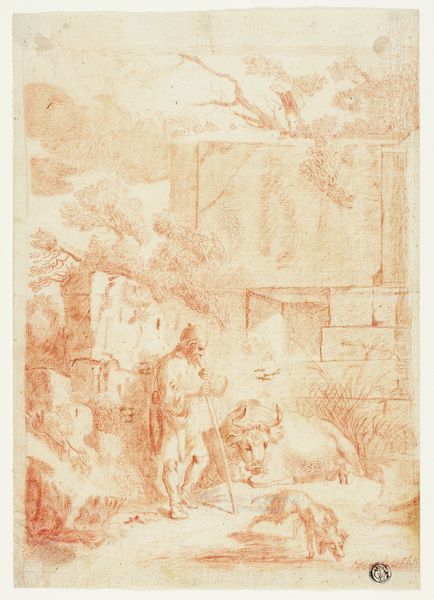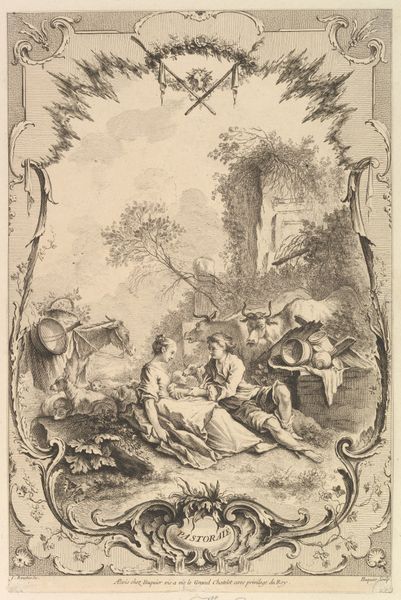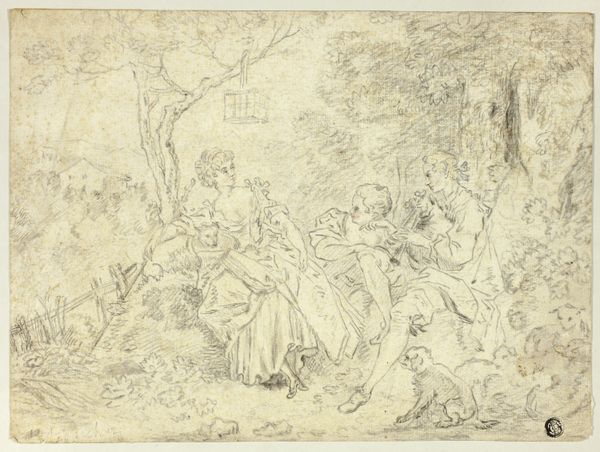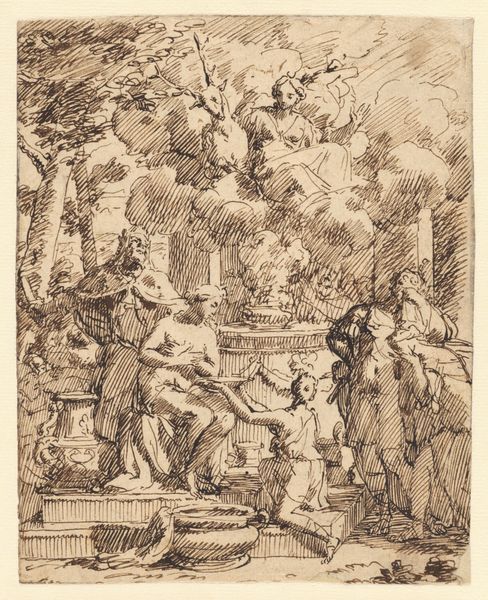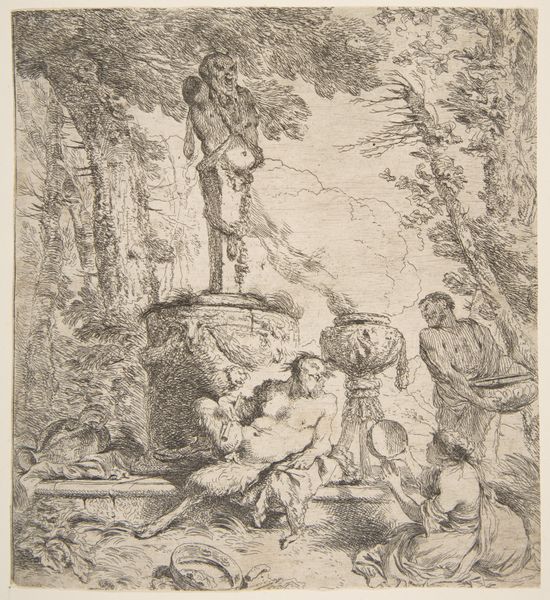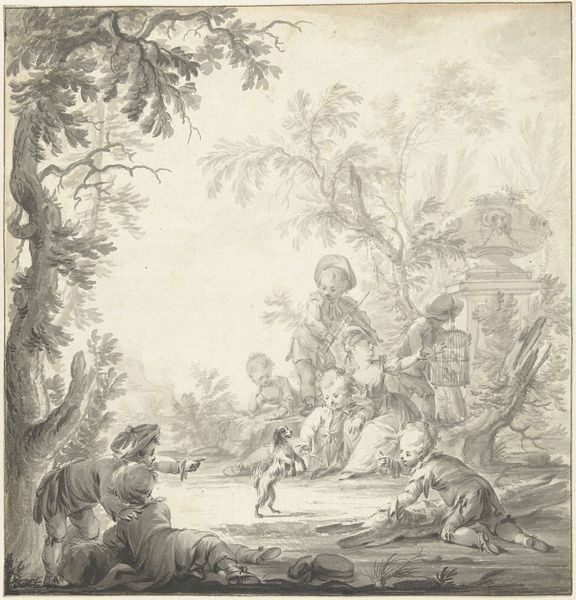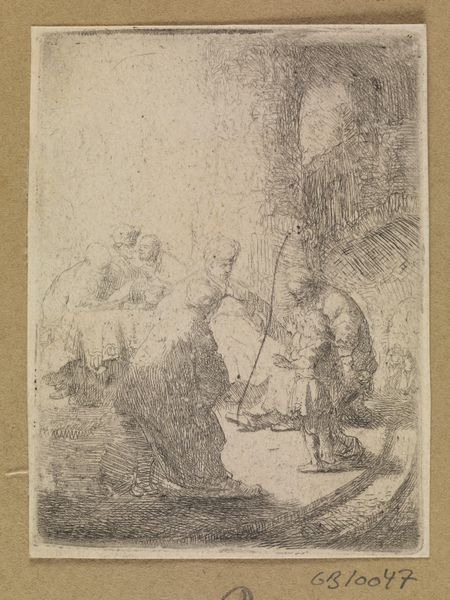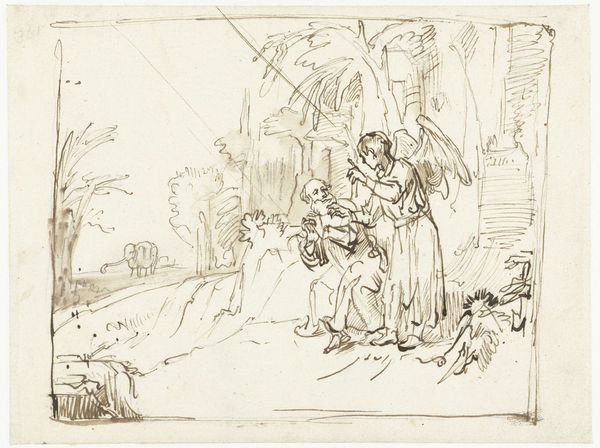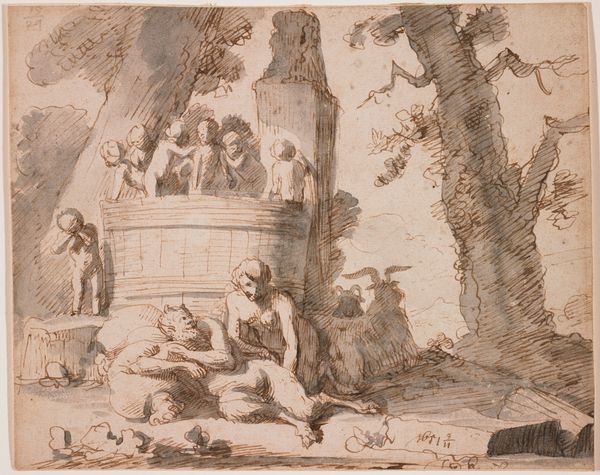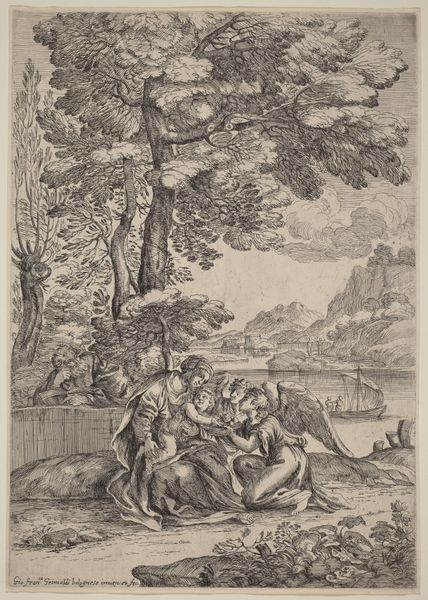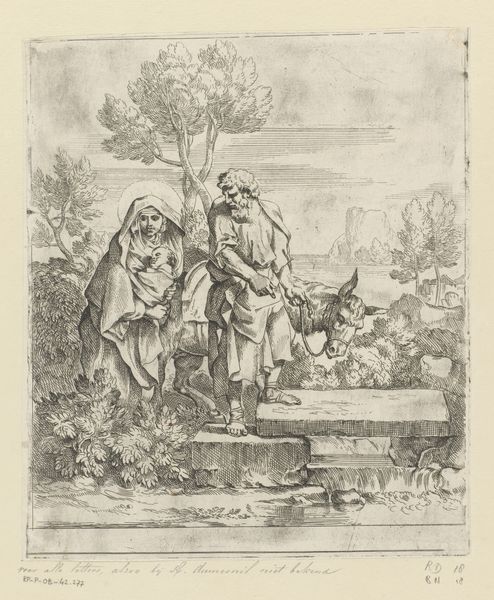
Dimensions: height 259 mm, width 200 mm
Copyright: Rijks Museum: Open Domain
Curator: Ah, this delicate scene by Gilles Demarteau, dating back to the late 1760s, presents itself in the form of an engraving. The artwork titled "Wasvrouwen met kinderen bij beek," or "Laundresses with children by the brook" in English, truly captures a slice of 18th-century life. Editor: Immediately, I am drawn to its warmth, despite its humble subject. It is rendered almost entirely in sepia tones, like faded memory, softening its edges. Curator: Precisely! Demarteau was quite celebrated for his imitations of drawings in crayon. Here, the picturesque quality definitely aligns with Rococo sensibilities. The choice to depict a domestic scene, however, reveals broader shifts in artistic taste during that era. The engraving provides insight into how these images might have circulated widely in printed form, shaping the public's understanding of labor and domesticity. Editor: It's beautifully composed; there’s almost a stage-like arrangement to it. One woman, seemingly engrossed in washing, becomes the central focus, drawing us to that immediate action. Further, you can make out children peering over her, while a taller, standing figure balances another child on her hip. These familial elements underscore both a communal spirit as well as its toils. Curator: Yes, the brook, or creek, acted as this meeting place in a public and intimate way. Think about the practical demands on women to uphold a household; while the details feel unique and quaint to our sensibilities, this particular rendition does, in fact, represent the daily existence for countless people. One sees these kinds of figural themes recurring throughout the genre paintings that existed at the time. Editor: Absolutely. Art serves to bring us back to places long ago; with its visual shorthand we come to learn of other lives, customs, beliefs and experiences. I appreciate how Demarteau elevated this humble activity with his artistic flourishes; the almost ethereal tones with which it has been imbued creates this lovely atmosphere of peace amidst labor. It prompts reflection not only on our daily lives, but their resonance. Curator: Indeed, these prints helped to democratize images. Through their circulation, artwork gained meaning, shaping collective memory, or, shall we say, a cultural history, if you will. Editor: I agree, so perhaps, in remembering that, these depictions should continue to be accessible—for everyone, and by everyone.
Comments
No comments
Be the first to comment and join the conversation on the ultimate creative platform.
